Music Therapy
What is a Music Therapy?
The potent therapeutic properties of music enhance a person’s well-being. It is an alternative to conventional forms of therapy, like cognitive behavioral therapy (CBT) or counseling.
To encourage positive changes in their client’s general mood and mental state, music therapists use their clients’ associations and reactions to music. Playing an assortment of instruments or listening to music can be a part of music therapy sessions. It might also include dancing or singing along to the tunes.
It can help people improve confidence in their communication skills, self-awareness and social awareness, independence, concentration, and attention span.
The effectiveness of music therapy depends on the person receiving treatment and the therapist engaging in live musical interaction. Music therapy can also heavily incorporate improvisation. This creates music on the go in response to a subject or mood. An example of this would be creating a storm sound using drums and a rainstick.
Creating music may be just as therapeutic as listening to it, and music therapy supports individuals in actively producing the music that they find uplifting.
This article discusses music therapy, how it can aid with mental health improvement, and its effects on various mental health conditions.
How does the process of music therapy operate?
Music has a highly complex effect on the brain. Pitch, tempo, melody, and other elements of music are all processed by distinct brain regions.
For example, the frontal lobes interpret feelings generated by music, the cerebellum handles rhythm, and a small area of the right temporal lobe aids pitch comprehension.
When it hears intense music, the brain’s reward region, known as the nucleus accumbens, can even cause strong physical indicators of pleasure, like goosebumps.
These profound physical responses the body has to music can be used by music therapists to support patients with mental health issues.
Origins and history of Music Therapy:
For many millennia, music has been a part of human existence. In particular, the discovery of instruments by specialists that date back more than 40,000 years suggests that the human impulse to communicate or express oneself through music is deeply ingrained.
Although music has been used for therapeutic purposes since ancient Greece, modern therapeutic applications of music therapy emerged in the 20th century following the end of World War II.
Medical studies on music’s therapeutic properties continued to expand in the 1800s, and by the 1940s, institutions were providing music therapy educational programs. One of the three persons who first proposed using music as a therapeutic tool, E. Thayer Gaston, organized and pushed the technique to make it a recognized kind of treatment.
These days, there are numerous societies for music therapy all around the world, and music therapists are employed in social, educational, and private settings.
What Kinds of Music Therapy Present?
There are two categories of music therapy:
Physical music therapy is when a person moves in response to music therapy. It includes moving in rhythm with the rhythm of the music, singing, and playing musical instruments. The body’s organs and systems are stimulated by these physical reactions. For instance, music therapy’s ability to raise heart rate helps enhance blood circulation. Thus, physical music therapy can help people recover from ailments including migraines, high blood pressure, and heart disease.
The goal of psychological music therapy is to enhance a person’s emotional and psychological health. It is possible to improve one’s mood and focus on oneself by listening to music therapy. Additionally, music can synchronize brainwaves, resulting in a deeply relaxing state similar to meditation which can help reduce anxiety and tension as well as the symptoms of attention deficit hyperactivity disorder (ADHD). Furthermore, music therapy induces endorphin release, which elevates mood and lessens unpleasant sensations like nausea.
Advantages of Music Therapy:
There are other benefits to creating or listening to music that spoken therapy may not be able to offer.
For example, studying and performing a piece of music can help with memory, coordination, reading, understanding, and math skills. It can also impart lessons about responsibility and tenacity.
A great sense of accomplishment that comes from creating music can also uplift people’s moods and increase their self-esteem.
Since clients can listen to any kind of music during therapy, music therapy can also introduce people to a wide range of cultures. People can feel more connected to the music they hear or play when they are aware of the background of the song.
While talking therapy involves self-expression as well, music therapy offers a creative outlet for self-expression that may be a more pleasurable method to work through challenging emotions.
Another approachable method for processing and exploring challenging feelings, events, or memories with music is lyric analysis.
For instance, if someone is having trouble expressing themselves, they can find words that reflect how they are feeling by looking for themes and meanings in the songs and offering alternate lyrics that relate to their experiences and life.
The following are some established advantages of music therapy:
- enhanced self-worth
- lessened fear
- exacerbated motivates
- effective and secure emotionally being released
- improved communication and closer relationships with others
Who Is Suitable for Music Therapy?
Military Personnel: In the course of performing their duties, military personnel frequently encounter psychological and physical obstacles that could cause harm to them physically or psychologically. Veterans suffering from PTSD or other mental health disorders can benefit from music therapy as they recover from their emotional and physical wounds.
People who suffer from Autism Spectrum Disorder (ASD): The patient learns best when the information is rhythmic, predictable, and constant because of their language disability, communication issues, and repeated behaviors. As a result, music therapy can help patients improve their capacity for learning and communication.
Alzheimer’s Patients: Memory loss is one of the cognitive declines experienced by those who have Alzheimer’s disease. Similar to how memories are evoked by returning to familiar locations, music therapy can elicit memories connected to well-known songs. People with Alzheimer’s disease may experience good emotional reactions and a sense of connectedness and engagement when they get music therapy.
Prisoners: The psychological health of inmates can be addressed through music therapy. It offers a way for self-expression and relaxation while also aiding in the reduction of stress, anxiety, and violent behaviors.
Those who have survived an accident may experience long-term effects that compromise their physical and emotional health. Some people may suffer from mental health issues like depression or panic disorder, which are characterized by elevated anxiety and fear. In these situations, music therapy is an effective tool for assisting accident survivors in healing both mentally and physically.
People with ADHD: As ADHD is frequently seen in children, music therapy can be beneficial for those with this disorder. It facilitates enhanced concentration and focus, making kids feel more at ease and exhibiting better concentration and involvement with their environment.
Substance Abuse Addicts and Recovering Addicts: Because music therapy promotes relaxation and lowers stress levels, it can help lessen cravings for substances. Additionally, it can assist those who have healed in regaining their mental and physical capacities.
How does it alleviate anxiety?
Numerous studies indicate that music therapy can lessen anxiety in a variety of populations, including those receiving critical care, cancer patients, and surgical patients. Studies have shown that listening to music can also lower blood pressure and pulse rate, which can have an immediate impact on an individual’s level of stress.
Additionally, there is evidence that persons receiving music therapy report feeling less anxious right after the session, suggesting that music therapy may be a practical means of rapidly reducing symptoms.
The body releases stress chemicals like cortisol and adrenaline in response to music, and lowering these hormone levels can help alleviate anxious feelings.
How it alleviates depression:
Research indicates that music therapy may help alleviate depressive symptoms; individuals who combine music therapy with conventional depression therapies, such as talking therapy, report better outcomes than those who receive only standard therapy.
In addition to releasing endorphins, which are chemicals that can reduce pain and promote happiness, listening to music can also release dopamine, a hormone that makes people feel good.
While there is no permanent treatment for depression, music therapy can have some short-term advantages. A dependable source elevates their feelings while encouraging communication and originality.
In young people:
The following are a few advantages of music therapy for kids:
- providing enjoyable means of expressing emotions and ideas
- enhancing social interaction and communication abilities stimulating imaginative play
- enhancing coordination and focus
- raising awareness of oneself and raising awareness of others, especially during group music sessions
- enhancing resilience and self-worth
- enhancing one’s language and listening abilities
- strengthening ties within the family
What Impacts Can a Client Experience from Music Therapy?
According to Koelsch et al. (2009), music has an impact on a client’s attention, emotion, cognition, behavior, and communication. Perception is also influenced by music (Koelsch et al., 2009). A person’s ability to interpret auditory cues, such as pitch height and frequency modulation, is enhanced by music training (Koelsch et al., 2009).
Numerous brain areas are activated differently in response to different types of music (Koelsch et al., 2009). According to research using functional neuroimaging, listening to music can affect both “non-musicians” and musicians’ limbic and paralimbic structures, which are important processing centers for emotions (Koelsch et al., 2009).
Research is still ongoing to determine the peripheral physiological impacts of creating and listening to music (Koelsch et al., 2009). But because emotion affects the immune system, endocrine system, and autonomic nervous system, and because music can elicit and modulate emotions, Koelsch and colleagues (2009) propose that disorders linked to dysfunctions and imbalances in these systems may benefit from music therapy.
The Methodology of Music Therapy:
Assessment: To better understand a patient’s condition, including any medical history, physical and communication abilities, and musical preferences, music therapists perform preliminary examinations. A customized music therapy plan is aided by the results of this assessment.
Sessions: In treatment, patients and music therapists write songs, sing, listen to music, do movement exercises, play instruments, or talk about different facets of music. The activities chosen are determined by the patient’s demands and therapeutic goals.
Assessment: Following a course of treatment, music therapists assess how successfully the therapy has addressed the client’s objectives and general well-being.
What takes place in a session of music therapy?
During your session, your music therapist will assist you with creating and/or listening to music. You could take one or more of these actions:
- Compose some music. You write lyrics, compose music, or create original music together.
- Sing along to some music. You perform a song for others with your voice.
- Use an instrument to play. Piano sounds, beating drums, or guitars can be used to communicate music.
- Make do. Together, you and your therapist create sounds and music that express your feelings. This may include practicing a musical instrument or singing a tune.
- Make a move to the music. This could be as easy as tapping your toes together or as difficult as doing a choreographed dance.
- Play some music. In directed listening, you listen to a recording or music that your therapist has created. After that, you discuss the music and how it has helped you deal with your feelings or experiences. To help you relax, your therapist might also play some music and use the beat to help you stretch or breathe.
- Talk about the lyrics. You discuss the significance of a song’s lyrics after reading or listening to them.
What Type of Music Is Fit for a Therapeutic Setting?
Depending on the tastes of the people undergoing music therapy, several categories of music may be included. A wide range of musical categories, including jazz, pop, classical, and others, are included in music therapy. As a performing art, music therapy is flexible and may be tailored to the individual needs of patients. As a result, a thorough grasp of music and its associated psychological and physiological impacts is essential for music therapists.
In what setting is music therapy conducted?
There are numerous contexts in which music therapy is used, including:
- medical facilities.
- Schools.
- residential care facilities.
- senior living facilities.
- clinics for outpatients.
- centers for mental health.
- homes designed for those with developmental difficulties.
- prisons.
Four Ideas and Interventions for Music Therapy:
Kids’ sing-along music therapy is a great suggestion for helping your therapy clients.
1. Singalong Fandom (n.d.) proposes that singing in a less formal manner than a choir may be a part of music therapy sessions for individuals or groups.
The singalong can be done using the music therapist’s songbook or a basic copy of well-known song lyrics. Singing favorite and well-known songs by memory or learning a new song by rote were two options available to participants (Fandom, n.d.).
Singalongs promote involvement in an enjoyable musical activity (Fandom, n.d.). They may be used for a variety of reasons, including teaching breathing exercises.
2.”Writing songs during blackouts” (Seibert, n.d.).
During this session, the therapist gives the clients the lyrics to four or five songs that symbolize various aspects of recovery, such as overcoming obstacles, finding support, or conquering challenges. After that, clients are urged to spend some time reading the lyrics of the song of their choice and using words from the lyrics to compose a new song.
3. Seibert, n.d.; Musical Hangman.
The concept is to sketch a theme picture on a board and challenge your clients to identify the word that is missing before the image becomes unrecognizable.
subsequently, choose a word with a theme and search for songs that start with each letter in the word. The objective is for the consumers to attempt to guess the target word while listening to the music. For instance, the songs “Hey Jude,” “A Little Ray of Sunshine,” “Praying,” and so on may come to mind when you hear the term “happy.”
One can play and sing along to the relevant song for each letter that is properly guessed. Along with complimenting the letter, the medical professional can recommend music on the same topic.
4. Composing Blues Songs (Seibert, n.d.).
To help the client grasp the fundamentals of the blues, the music therapist goes over the history of the song. For example, the client may repeat line A and then line B. Request the client to discuss something that might be making them feel “blue,” and then ask them to come up with a workaround or coping strategy. Next, come up with creative ideas on how to write songs that include the statements poetically.
Once every client has had an opportunity to pen their “blues,” engage in an ongoing sing-along or improvisation. Sing everyone’s ‘blues’ together while sticking to the same melodic line. With an iPad, customers can expand this practice by improvising on the blues scale keyboard found in the “GarageBand” software.
12 Suggested Songs Often Played:
The following twelve tracks, in the opinion of Rachel Rambach (2011), are essential listening for any music therapist:
- “Pie Americana”
- “Girlish Grace”
- “Blue Suede Shoes”
- “Blue Skies”
- “Be Happy, Don’t Worry”
- “Tonight, the Lion Sleeps”
- “Rely on me.”
- “Ob-la-di”
- A place “over the rainbow”
- “Bring Me to the Ballgame,”
- “This Tiny Lamp of Mine”
- “You Are My Sunshine.”
Ten Exercises and Activities for Adults in Music Therapy:
The 2002 book by Wigram and colleagues contains the following adult music therapy activities (interventions) based on research.
- The Art of Improvisation
- singing popular tunes
- Vibroacoustic medicine
- This type of music therapy is responsive. The client lies in a chair, mattress, or bed, and speakers are incorporated into the item to play music. The vibrations caused by the music are then immediately felt by the customer (Wigram, Pedersen & Bonde, 2002).
- Techniques for reducing stress
- Movement and music
- Social dancing or folk dancing
- stimulation with vibrotactile’s
- Memories of music
- stimulation through music
- Composing songs
The scientific references linked to each of these activities are provided on pages 193–194 by Wigram et al. (2002) for additional information about any of these activities.
What dangers might accompany music therapy?
Music therapy is low-risk and safe. But when you listen to music, you can remember unpleasant or surprising things.
Your music therapist will discuss your life events with you to lessen the likelihood of this occurring. These consist of any upsetting memories from the past or other elements that could influence your response to music. If you feel comfortable providing this information, your therapist can adjust the session to suit your needs. Your therapist will do all within their power to make the session comfortable, safe, and effective.
Summary:
Although there is no magic bullet for mental illness, music therapy can be a useful and pleasurable tool for easing the symptoms of a wide range of ailments, such as anxiety and depression.
People can digest their experiences and express their feelings in a creative and approachable way using music therapy. For ages, people have utilized music because of its potent emotional and mood-altering properties.
Apart from aiding in the treatment of mental health issues, music therapy offers a host of other advantages, including fostering creativity, broadening one’s education and cultural awareness, and enhancing cognitive abilities like memory.
FAQs
Is music therapy beneficial for my child?
Yes, in fact. All age groups are treated by music therapists, including early toddlers and teenagers. They can schedule sessions to accommodate your child’s specific needs. Music therapy may help your child’s development in several ways, such as:
Emotions, Learning, and Behaviour.
Does engaging in music therapy need me to be musically gifted?
Participation does not require any musical knowledge or proficiency. Music therapy is beneficial for all people, regardless of their background or skill level. Your music therapist will get to know you and any prior musical experience before designing sessions that are specific to your requirements.
Is inpatient or outpatient music therapy available?
Depending on the specific program, yes. It’s possible that you could attend sessions during the day. A music therapist may also come to see you in a medical facility or school setting.
How many sessions of music therapy are necessary?
Your therapy goals will determine this. Together with your music therapist, you will determine the number, length, and frequency of sessions that work best for you.
Which four categories of music therapy exist?
Music therapy has four basic methods: improvisational, compositional, re-creational, and receptive. Every approach focuses on a distinct way that the client can participate.
To what extent does music therapy work?
Music therapy also has health benefits. According to some studies, it can enhance mobility, motor skills, and physical coordination while also lowering subjective levels of physical pain. Music therapy can significantly enhance a client’s quality of life.
What adverse effects might music therapy cause?
Music therapy is quite safe and usually has no side effects. On the other hand, some people could find loud music or particular musical genres uncomfortable or bothersome. The music may elicit intense emotions or bring back memories that could be happy or tragic.
Does music therapy exist?
Hospitalized patients with illnesses or injuries still receive mental health treatments including music therapy. However, because music therapy has a positive impact on mental health, it is utilized with patients who have physical illnesses.
Does overthinking benefit from music therapy?
What Benefits Can Music Have for Overthinking? Due to its ability to significantly lower anxiety, music is frequently utilized in therapy to help patients feel less stressed and more at ease.
References
- Professional, C. C. M. (2024, July 2). Music Therapy. Cleveland Clinic. https://my.clevelandclinic.org/health/treatments/8817-music-therapy
- Dresden, D. (2020, September 28). When does a person need therapy? https://www.medicalnewstoday.com/articles/do-i-need-therapy
- BPsySc, H. C. (2024, August 2). What are the Benefits of Music Therapy? PositivePsychology.com. https://positivepsychology.com/music-therapy-benefits/
- Music Therapy – Types & Benefits – Cleveland Clinic. (2024, June 5). MedPark Hospital. https://www.medparkhospital.com/en-US/lifestyles/music-therapy

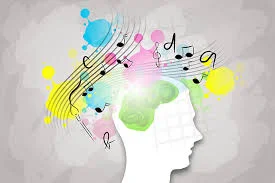
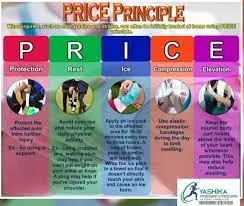

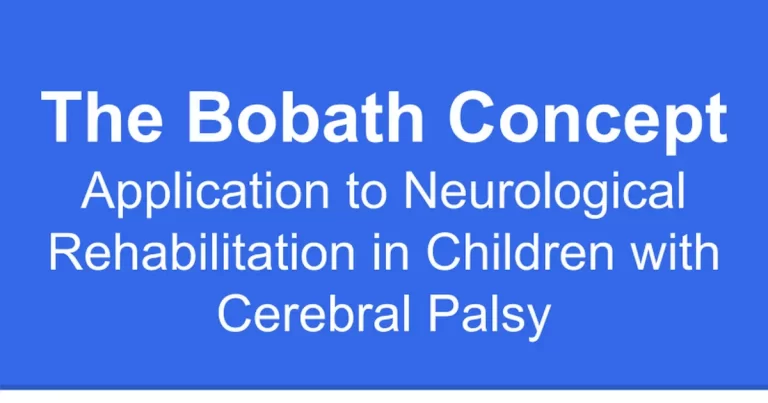
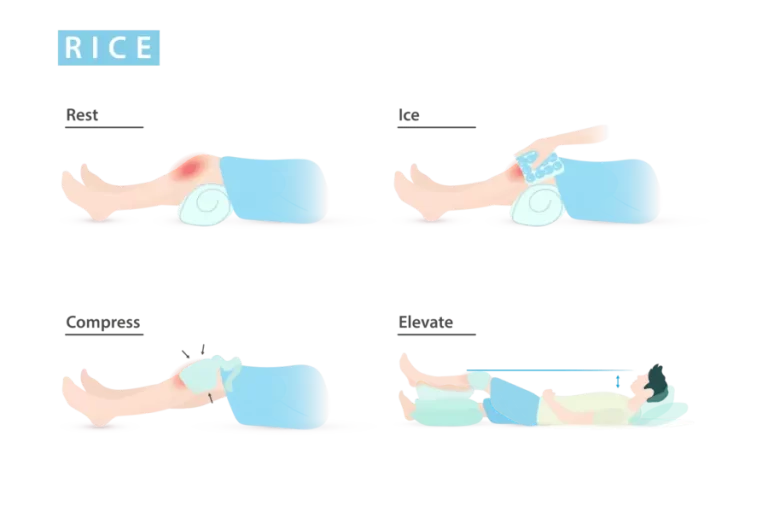

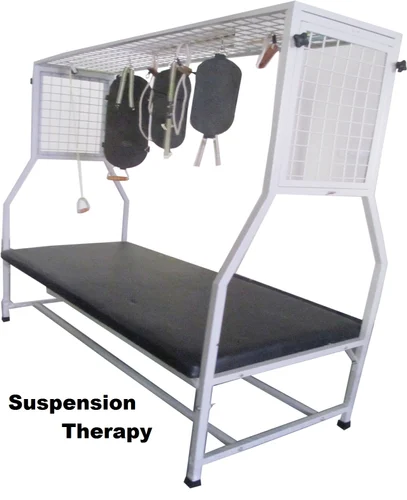
One Comment